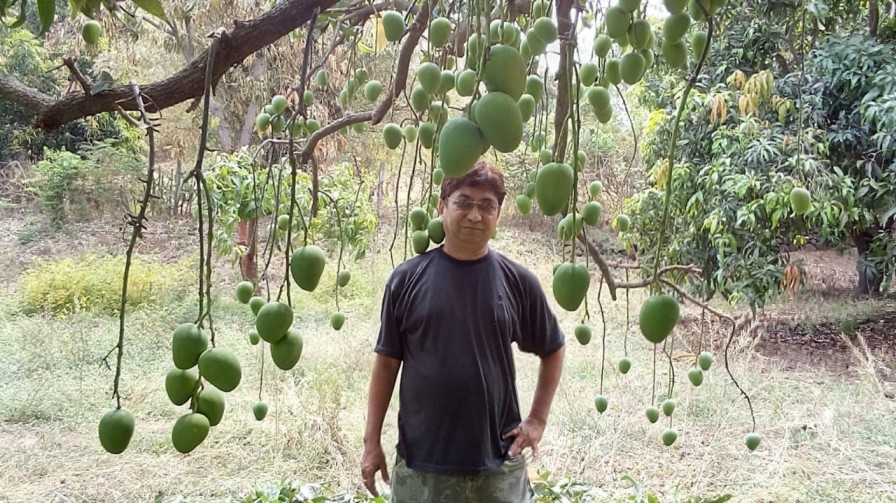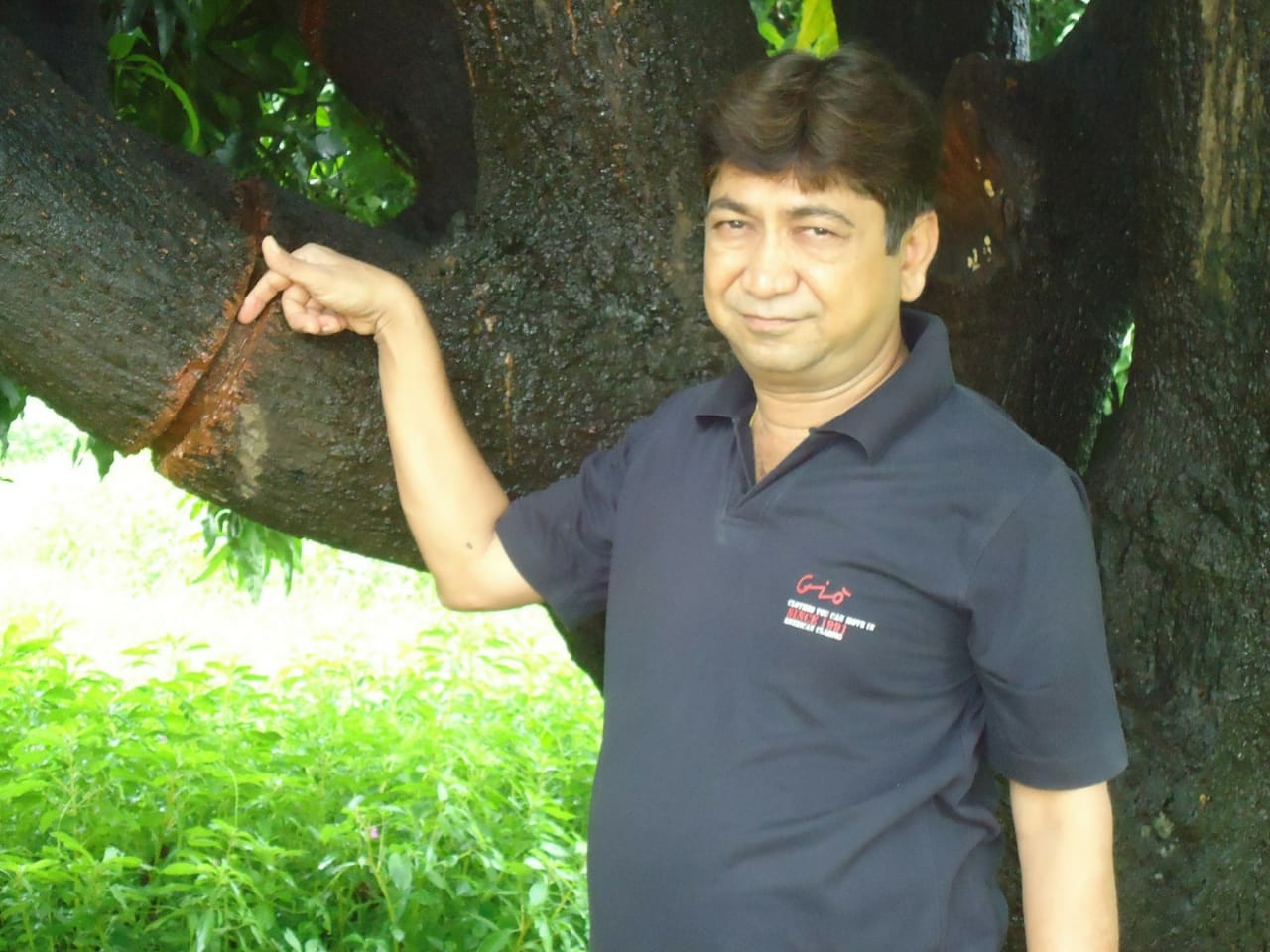When Mango trees grow old and are unable to produce a substantial number of fruits they are considered to be ‘senile’. In such situations, most orchard owners prefer to give them the axe and plant new ones instead. However, Valsad farmer in Gujarat and orchard owner, Rajesh Shah, has a rather unique technique which is a saving grace for such trees.
He has mastered a technique that makes them productive once again called — girdling.

Shah (63) has made mango trees, as old as 125 years, bear abundant fruit. They now stand majestically with their sprawling canopies on his farm in village Fansa of Kaprada taluka, 65 km from Valsad.
Standing under a ‘girdled’ tree with mangoes hanging from wire-thin stems, Shah bags the low-hanging fruits to prevent them from sunburn, and says, “Hapoos (Alphonso) begins fruiting from the third year onwards, and by the age of 35 they either fruit once every two years or produce fewer numbers, making them a suitable candidate for girdling.”
Shah’s mango orchard is spread on 65 acres with two varieties taking prominence, namely Alphonso and Kesar. Initially planted by his grandfather, Magan Lal Shah, the orchard is home to 100 trees that are 125 years old and another 500 which are close to 80. The Shahs, originally from Rajasthan, immigrated to Valsad around 180 years ago. The family continues to live in the ancestral house in Biliya village that itself is over a century and a half old. Here he lives with his wife; both their son and daughter are chartered accountants and make a living in Mumbai.

Shah discontinued his studies after class 10, as he was “unable to cope up in an English medium school”. Now, he drives his Alto 6 km away from his home to visit his orchard daily.
A farmer since the age of 15, Shah fertilises the trees post-harvest with huge quantities of dry cow dung, having created rings around the base of the trunk. An Alphonso lover himself, he planted 300 of them in 1973, 900 in 2006 and three years later added another 1,700 seedlings, along with a handful of Payari and Mulgova varieties.
In 2020, he harvested 2,30,000 kgs of mangoes but feels this year’s harvest will be much less considering the long stretch of rainy days since the last monsoon.
Explaining the idea of girdling, Shah says he was inspired by a Gujjar folklore about reviving aged fruit-bearing trees by making a hole in its trunk. “I began experimenting with the technique in 1996 and mastered the technique only by 2011,” he informs. “This year I have girdled 75 branches.”
Girdling or ring-barking refers to the removal of a complete ring of the bark from a stem, branch or trunk. A horticultural method, it forces fruit-bearing plants to produce bigger and sweeter fruit.
Using a clean, sharp knife, an inch-long ring of the bark is cut away and the section is treated with a paste made of geru mitti and pesticide to prevent infection. If done correctly, these repairs will provide a path for critical sugars. In time, the tree will grow new layers that will cover the cut. Shah performs the girdling procedure around Diwali when the humidity level is around 70 per cent.
According to Shah, girdling should be performed on trees that are aged 35 years and above and on branches that are at least 15 to 20 ft above the ground. “The branch should have a minimum girth of 30cms,” he says.

Elaborating on the science behind girdling, Suman Shankar Gavit, former joint Director of Agriculture, Gujarat, and one who has been familiar with Shah’s technique since the late ’90s says it is a proven technology and replicated in several orchards in the State. “Girdling blocks the path of sugars headed elsewhere and forces it to go in the fruit on the branches above the cut. Following girdling, it has been observed, the fruit grows bigger and tastes sweeter,” he informs.
For his innovation, Shah was conferred the ‘Krushi Na Rushi’ title by the Gujarat government in 2006, the Sardar Patel Agriculture Research Award in 2009 by the Union Agriculture Ministry and the latest being IARI (Indian Agriculture Research Institute) Innovative Farmer Award in 2018.
Shah says the technique seems simple but caution needs to be taken while executing it, as a wrong move could ultimately lead to the death of a giant and sprawling tree.
(Edited by Yoshita Rao)
No comments:
Post a Comment